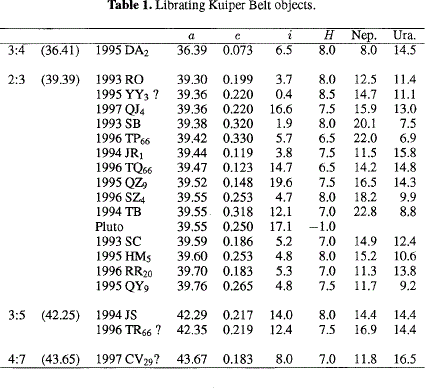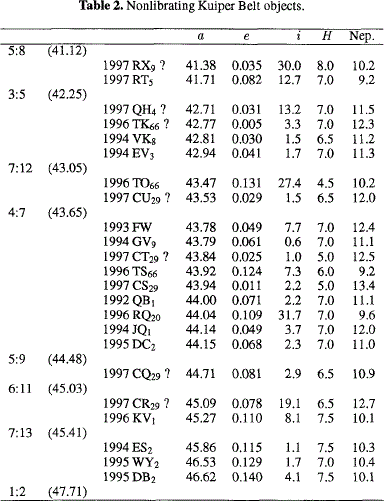No CrossRef data available.
Article contents
Small Bodies in The Outer Solar System
Published online by Cambridge University Press: 12 April 2016
Extract
This report is a continuation of three earlier reviews (Marsden 1996a, 1996b, 1998) that included a summary of our orbital knowledge of the Kuiper Belt. Presented at conferences held in the middle of 1994, 1995 and 1996, respectively, these reviews showed the steadily developing picture of a system dominated by the platinos, librating in the 2:3 mean-motion resonance with Neptune, and the cubewanos, a somewhat more distant population of nonlibrating objects with low orbital eccentricities. The existence of a 3:4 Neptune librator and a 3:5 Neptune librator was also suspected. These librators have now been confirmed, and a possible 4:7 librator and possible second 3:5 librator have also been found. The known and suspected multiple-opposition librators are listed in Table 1. Here it is important to note that the orbital semimajor axes a (in AU), eccentricities e and inclinations i (in degrees with respect to the 2000.0 ecliptic) are mean values that eliminate the large 12-year and 30-year periodicities arising from the indirect perturbations by Jupiter and Satum on sun-centered orbits. The numbers in parentheses are the semimajor axes (in AU) corresponding to the resonances. Following the absolute magnitude H, the entries “Nep.” and “Ura.” show the minimum distances (in AU) from Neptune and Uranus (the latter being of course quite small for the most eccentric 2:3 Neptune librators) within several millennia of the present time.


Information
- Type
- Extended Abstracts
- Information
- International Astronomical Union Colloquium , Volume 172: Impact of Modern Dynamics in Astronomy , 1999 , pp. 51 - 54
- Copyright
- Copyright © Kluwer 1999

